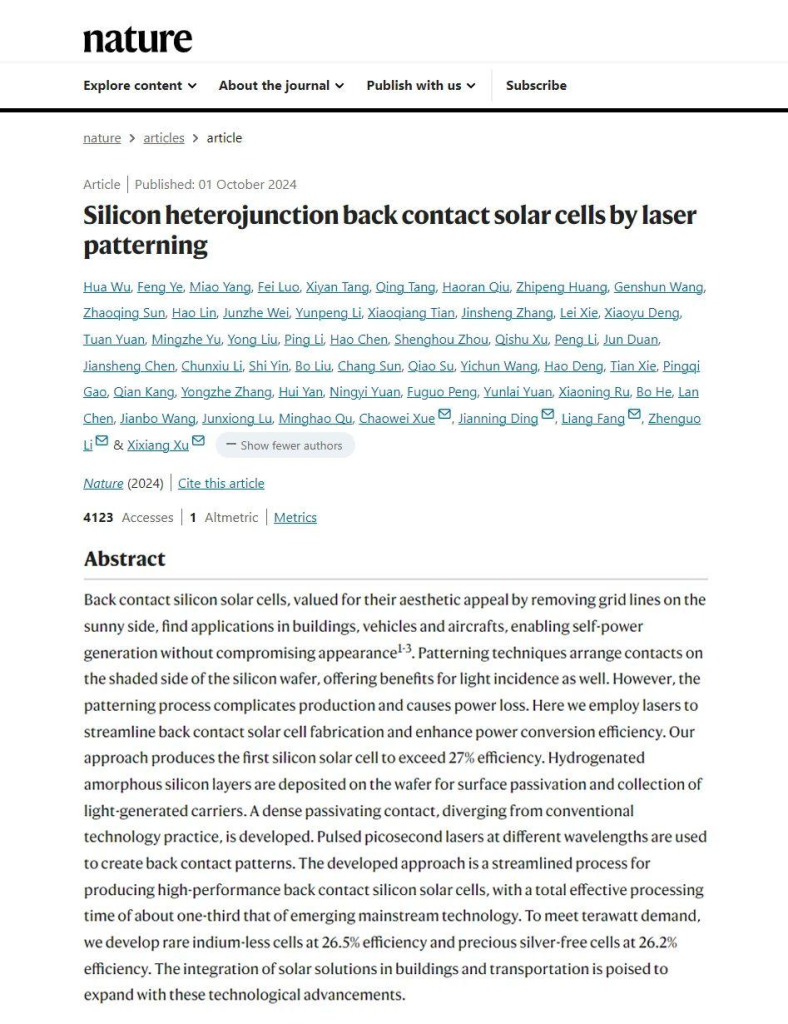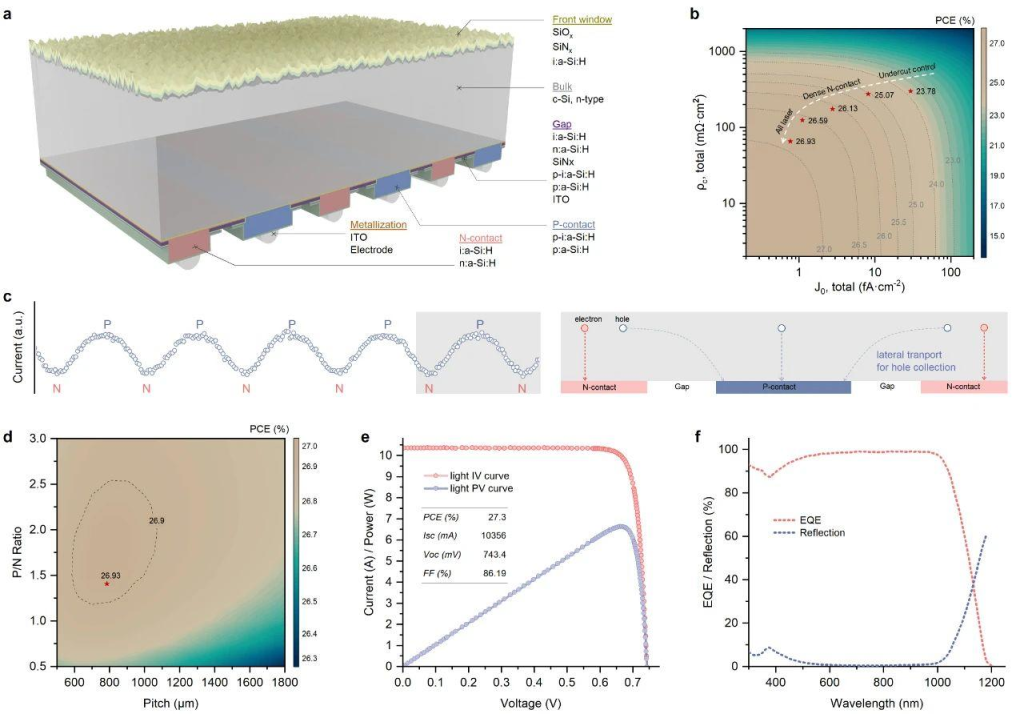LONGi recently published a research paper titled “Silicon heterojunction back contact solar cells by laser patterning” in Nature, reporting a breakthrough that pushes the photoelectric conversion efficiency of silicon solar cells beyond 27% for the first time. This achievement establishes a new milestone for photovoltaic technology based on silicon materials.

The study highlights the immense potential of back-contact (BC) solar cells in achieving both high efficiency and low cost. To reach this efficiency, LONGi’s Central R&D Institute focused on two critical areas: silicon wafer optimization and surface passivated contact technology. The team developed new dense heterojunction passivated contacts, overcoming the industry’s long-standing temperature limitation of 180-210°C and raising the process temperature to 240°C. Additionally, the team introduced a full-laser patterning process and a low-indium, silver-free metallization solution, ensuring both efficiency gains and cost-effectiveness, paving the way for future mass production of high-efficiency, low-cost BC cells.

In May this year, LONGi announced that its independently developed heterojunction back-contact (HBC) solar cell achieved a record-breaking 27.30% conversion efficiency, setting a new world record for single-junction silicon photovoltaic cells. This surpasses the previous record of 27.09%, achieved by LONGi in December 2023, further demonstrating the company’s confidence and expertise in BC cell technology and scalable production processes.
Over the past two decades, silicon cell manufacturing has undergone three major technological upgrades. During the Al-BSF (Aluminum Back Surface Field) era, efficiency remained below 20%. In the PERC (Passivated Emitter Rear Contact) era, efficiency improved to just under 25%. The latest TOPCon (Tunnel Oxide Passivated Contact) upgrade, which began last year, pushed efficiency beyond 25%. Looking ahead, BC technology is expected to lead the way for mass-produced solar cells exceeding 26% efficiency. LONGi’s latest research points to the future of ultra-high-efficiency solar cells—combining heterojunction technology with a BC structure to drive efficiency beyond 27%.


